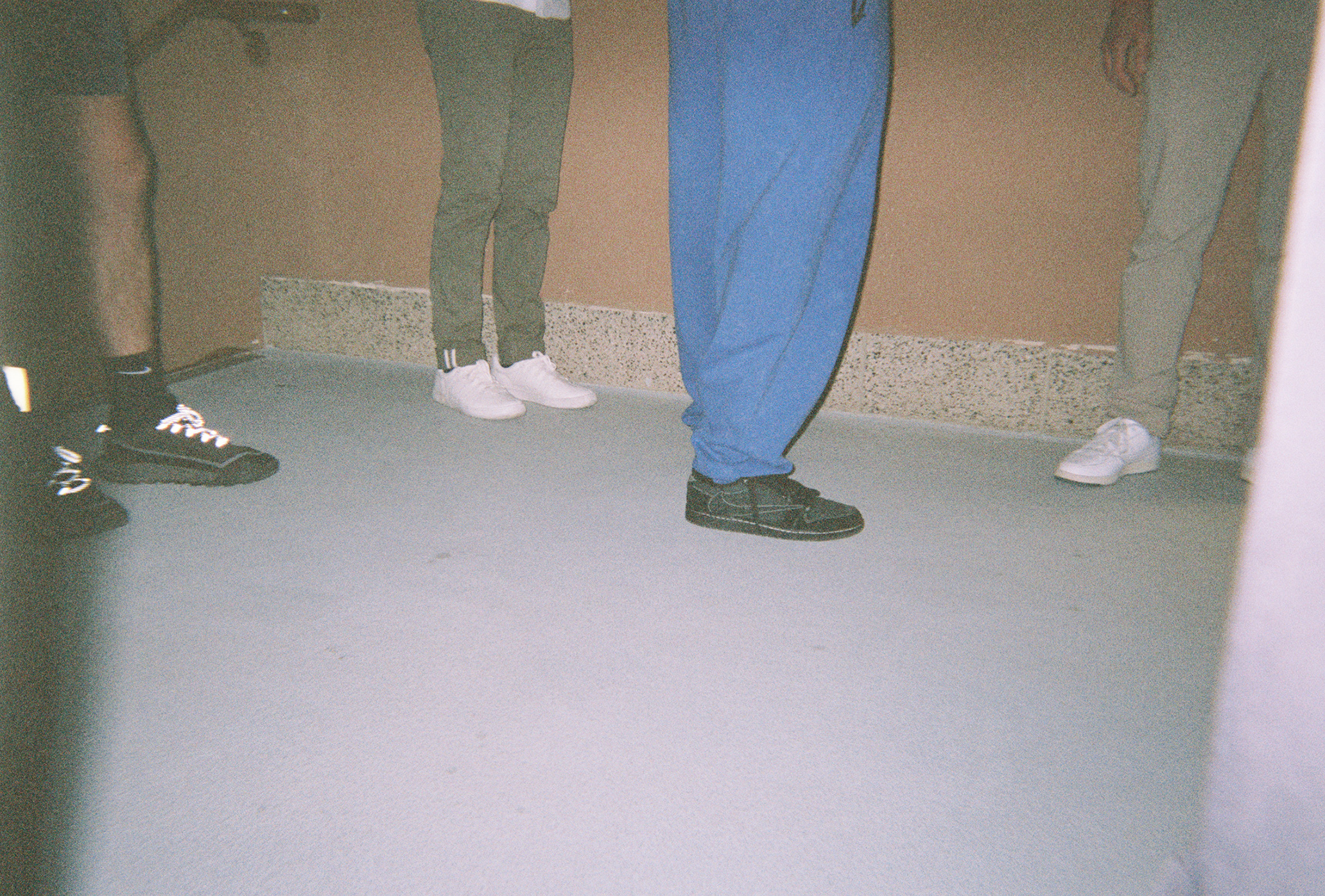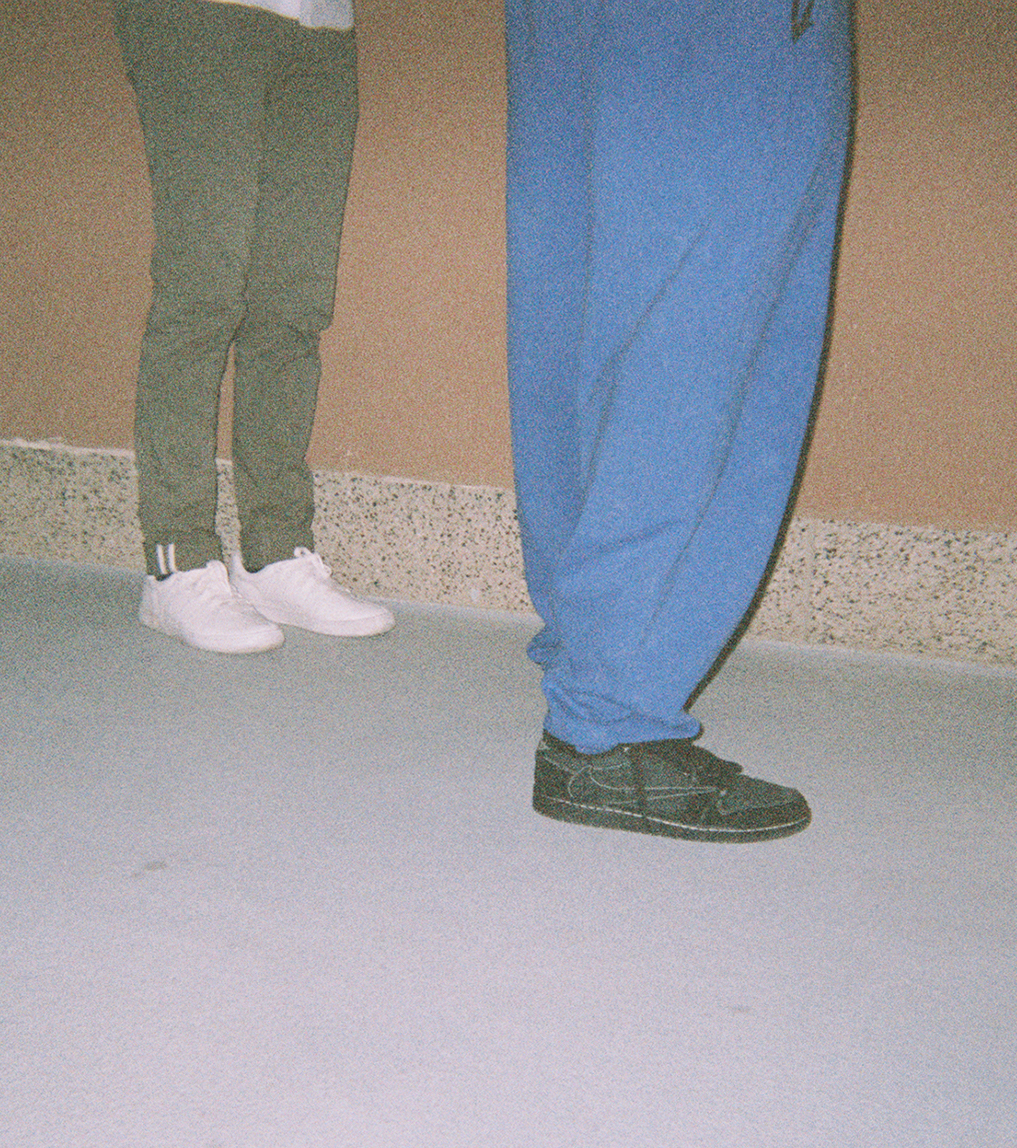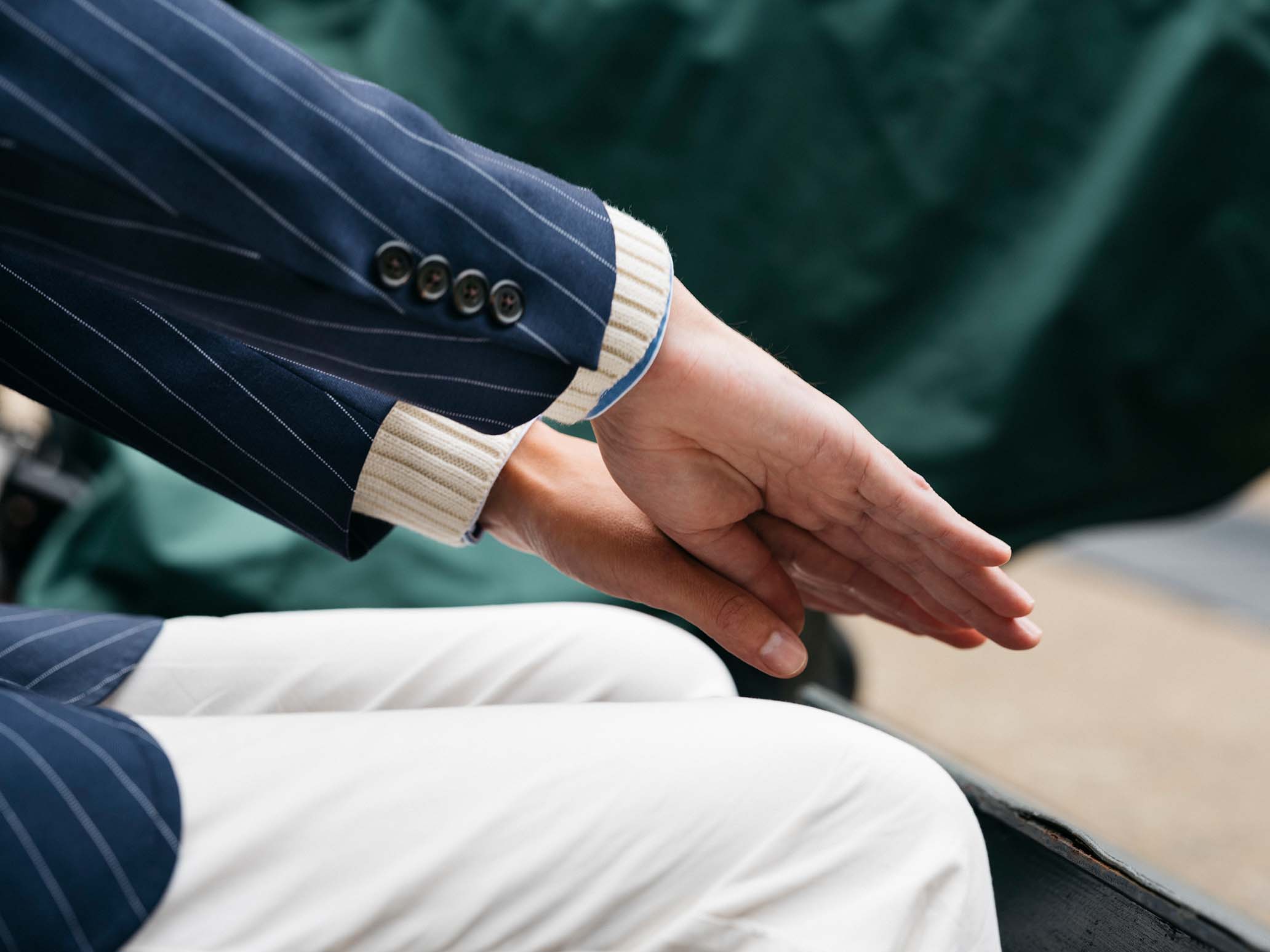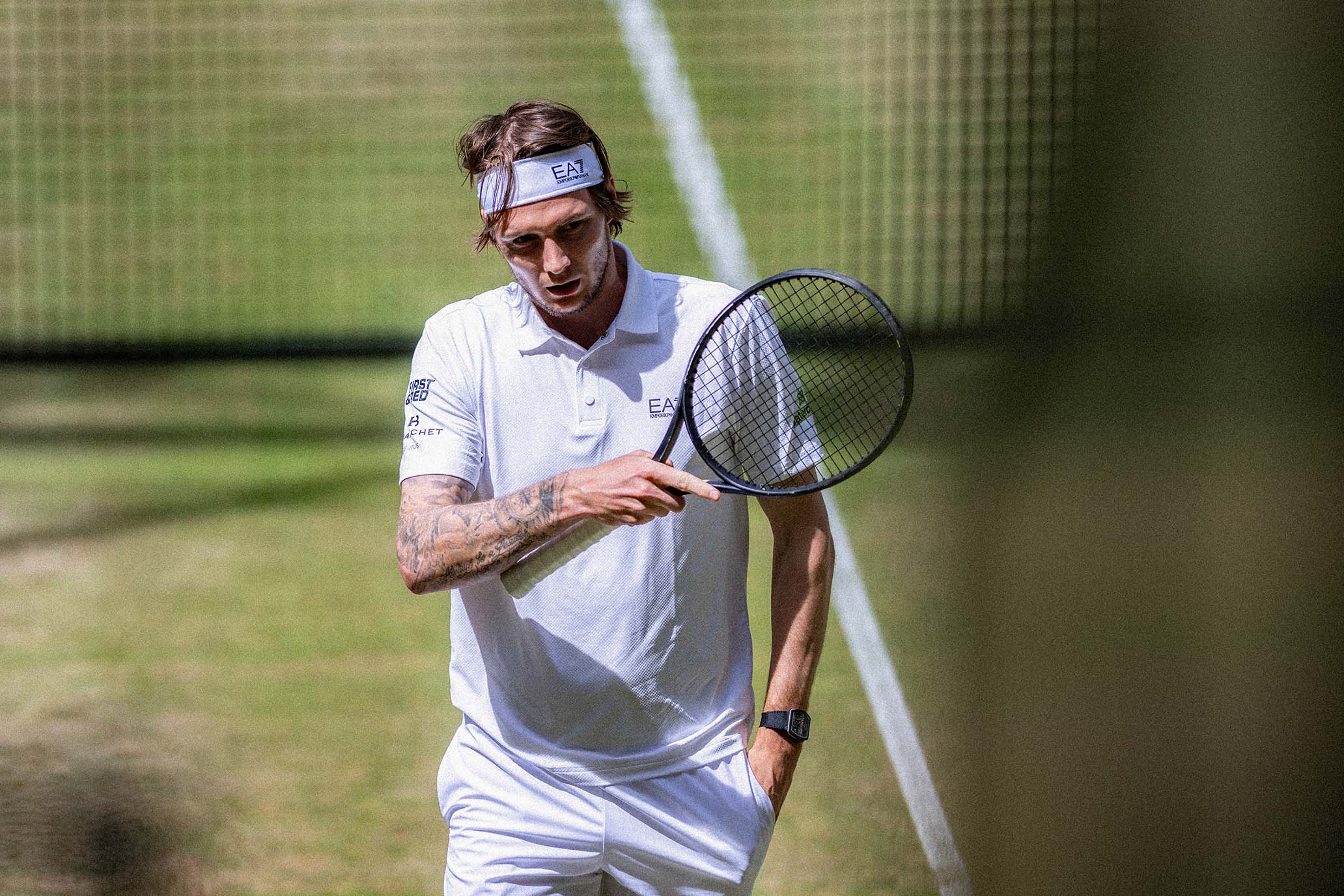Tennis Bodies Keepthe Score
Tennis Bodies Keep the Score
Challengers understands this grim and grimy side of a sport so traditionally depicted as clean, tidy, and polite.
Challengers understands this grim and grimy side of a sport so traditionally depicted as clean, tidy, and polite.
By AJ EcclesApril 18, 2024

Zendaya and Iga at Indian Wells in March. // David Bartholow

Zendaya and Iga at Indian Wells in March. // David Bartholow
Art Donaldson’s feet are disgusting.
A six-time major champion—he holds two titles at each major except the US Open—Art’s body has been through the wringer. As a physiotherapist inflicts elastic stretches upon Art’s legs, the camera lingers on a broken blister on his elevated foot. This breaks a cardinal rule of tennis: If you see a player removing their socks, avert your eyes or suffer psychological damage. The shot is fleeting, but it sets the stage for a film that relishes in the ugly blights as much as the enviable virtues of the athletic body.
In Challengers, Zendaya plays Tashi Duncan, a rising tennis star who suffers a career-ending injury during a college match at Stanford. Forever in her orbit are Art (Mike Faist) and Patrick Zweig (Josh O’Connor), childhood friends and former Junior US Open doubles champions whose relationship has dissolved as a result of their increasingly toxic battle for Tashi’s affection. Art, now married to Tashi, who also serves as his star coach, has achieved once-in-a-generation success; Patrick remains broke and eternally stuck on the carousel of the Challenger Tour.
Challengers is at once a study of sporting psychopathy and a muscular Cruel Intentions nostalgia play, akin to Emerald Fennell’s edgelord extravaganza Saltburn. This picture is—shot for shot—more successful than Fennell’s flimsier production, thanks to both the maturity of the three performers at its center and the boundary-pushing approach to a sport that is too often sanitized in onscreen adaptation. Director Luca Guadagnino—who most viewers may recognize as the man who captured Timothée Chalamet swooning under the Italian sun of Call Me by Your Name—plays with our physical relationship to the sport, at points literally launching the viewer across the net in a ball’s-eye view, with all the thrilling frenetic disorientation that entails.
Where recent tennis flicks King Richard and Battle of the Sexes owed their real-life protagonists the formal trappings of the biopic, a genre increasingly buckling under its own weight, Challengers requires no such creative restriction. Guadagnino takes advantage of this freedom, exploring at once the aesthetic appeal of his stars and the messy underpinnings of tennis itself.
Appropriate, for a screenplay deeply obsessed with maturing bodies at work and at play.
Indeed, the two inciting incidents of the narrative are moments of bodily expression. First, a beer-soaked flirtation between our three protagonists in a New York hotel room, just hours after Tashi has lifted the trophy as Junior US Open champion. Scantily clad in post-effort athleisure, the three gradually move from the floor to the bed, where a three-way kiss becomes an opportunity for Tashi to assert romantic authority over her admirers.
Though sex is ultimately never explicit in Challengers, the exertion of tennis is suggestive throughout. Embodied in climactic screams of “Come on!” after passionate rallies (Tashi vividly describes tennis as a relationship in which two players can fleetingly connect in perfect motion), or in sweat dripping off Art’s nose onto the camera lens as if to drench the audience in his exhaustion, it’s invigorating to see Guadagnino explore athletic pursuits as cousins to sexual opportunity. This isn’t news: The Olympic Village is infamous as a cornucopia of international sexual trade, and tennis is not immune. Players who enjoy the opposite sex have regular opportunities as ATP and WTA tours converge, and those who relish same-sex encounters share intimate spaces all year long. Your favorite player probably fucks.

"Canadian Doubles." / MGM Studios
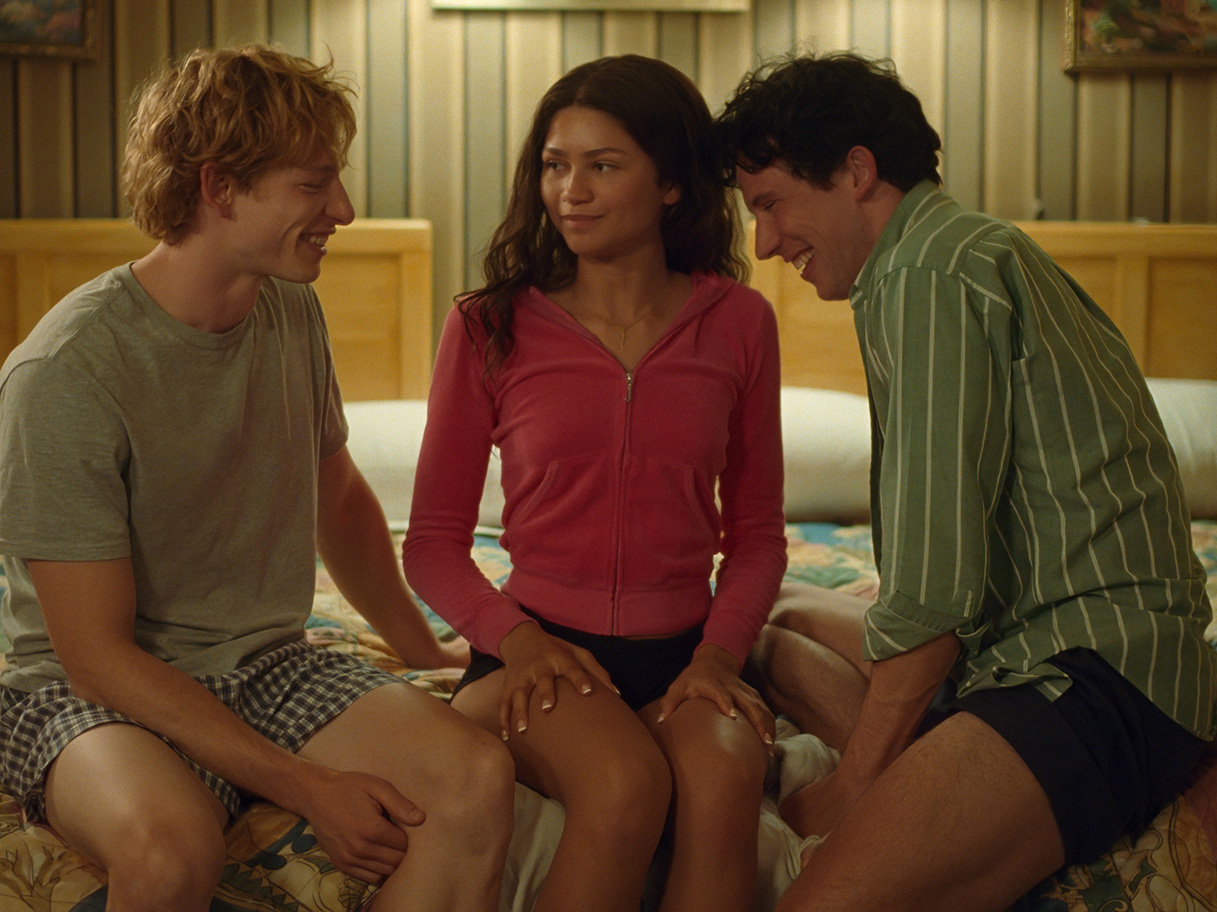
"Canadian Doubles." / MGM Studios
Challengers’ second pivotal moment is Tashi’s catastrophic knee injury, which should come with a trigger warning for those of us who remember Bethanie Mattek-Sands’ gruesome knee snap at Wimbledon in 2017. Tashi’s knee crumples as she lunges for a ball just out of reach, the knee cracking and bulging under her skin. Rather than cut away—as any respectful sportscaster would in times of trauma—Guadagnino zooms in. You must watch and hear with startling clarity as Tashi’s career ends violently, too soon, filling the screen.
Though Tashi’s injury is the most visceral, she is not the film’s sole victim of tennis’ physical stress. Art is covered in wounds—particularly on his shoulder, where it’s hinted he suffered a similarly serious injury. Scars of multiple cuts are visible on his arm where a surgeon has supposedly patched the champion back together. And when Patrick lifts his shirt we see a red and purple bruise on his torso, perhaps the result of a fall or of a particularly brutal ball strike. These are young people in permanent disrepair.
Throughout Challengers, it’s difficult to separate these physical scars from the fate of real players on tour today: Tennis bodies are not perfect superhuman vessels for genius. To be human is to break.
Even at the top of the game we see players struggling with the reality of the human body. Rafa Nadal famously won his most recent Roland-Garros with his left foot entirely numbed by injected painkillers. Venus Williams has battled through Sjogren’s syndrome—an autoimmune disease that causes fatigue—for years. Matteo Berrettini, among the most physically admired men on the tour, suffered such intense stomach distress during one match that he was compelled to write “Imodium, Grazi” on an on-court camera post-victory.
Challengers, in all its frenzied psychosexual melodrama, understands this grim and grimy side of a sport so traditionally depicted as clean, tidy, and polite.
Is the film without flaw? No. An overreliance on slow-motion sometimes crosses over into the absurd. This is particularly true in the third act, where a tense match begins to overstay its welcome in a manner not seen since Isner vs. Mahut, halting momentum right as it should be racing toward a climax. The tennis itself is not always rendered perfectly, especially the ever-difficult-to-replicate service motion. Tashi and Patrick have particularly egregious service form, though in fairness to O’Connor’s performance, it should be pointed out that Patrick’s exaggerated motion is essential to the plot.
These minor distractions matter, but not enough to detract from the thrill of seeing tennis finally allowed to get a little dirty on the big screen. To see the joyous messiness of the sport—and the fragile humans who play it—rendered with fleshy exuberance.
As audiences experience Challengers in the weeks leading up to Roland-Garros, we should be open to kicking up some clay and inviting the dirt to stick to our blistered skin a little. Just please don’t take your socks off.

